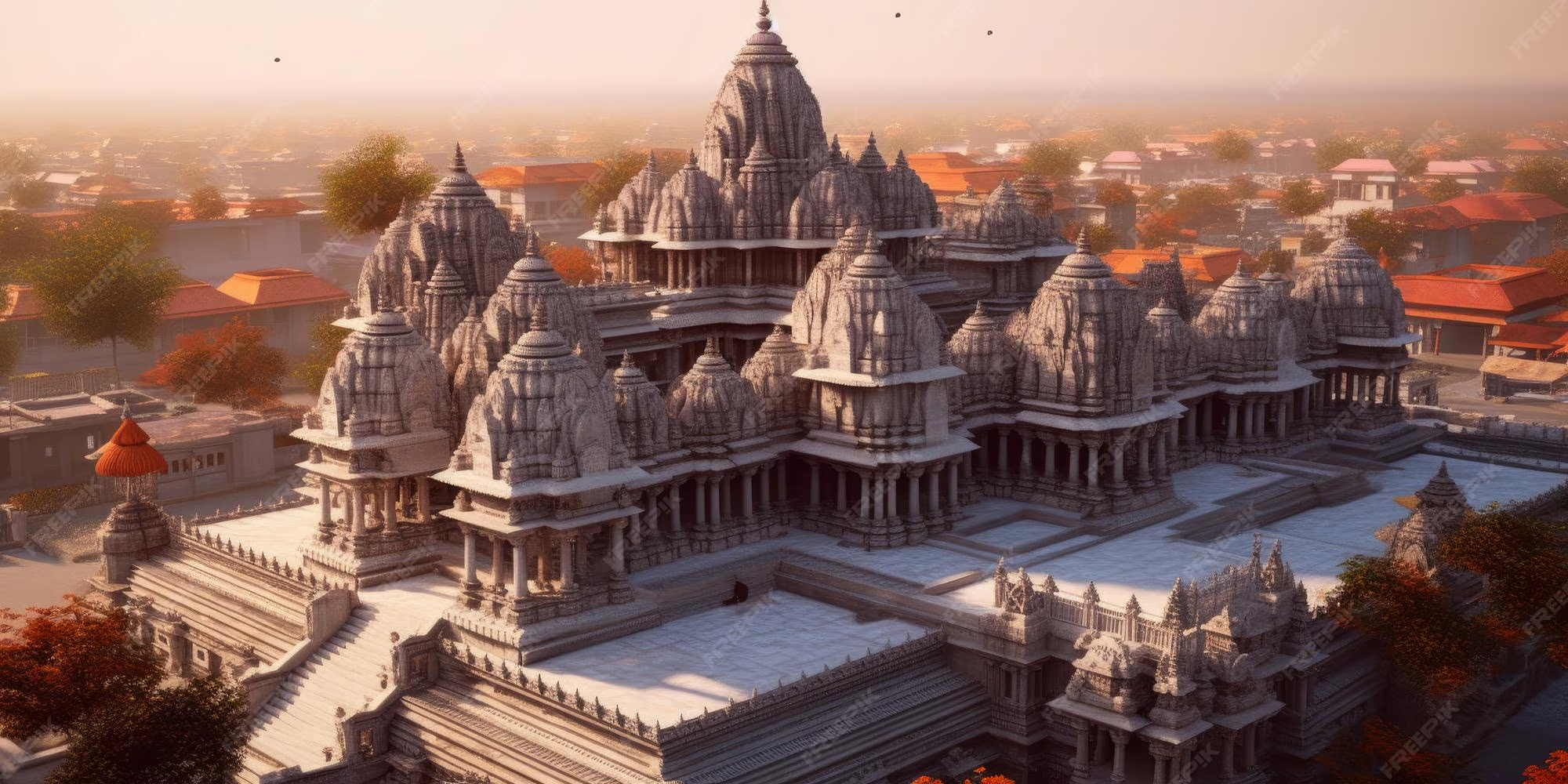This guide explores the best time to visit Ayodhya across seasons, factoring in weather, festivals, crowd levels, and travel tips to help you plan a peaceful and enriching journey. Ayodhya, the sacred birthplace of Lord Rama, is one of India’s most revered spiritual destinations. Located on the banks of the Sarayu River in Uttar Pradesh, this ancient city draws millions of pilgrims, history enthusiasts, and cultural travelers every year. With its temples, ghats, heritage sites, and mythological landmarks, Ayodhya offers a deeply immersive experience—but timing your visit is key to making the most of it.
🌤️ October to March: The Ideal Season
Why it’s the best time: These months offer cool, dry weather with temperatures ranging from 10°C to 30°C—perfect for walking tours, temple visits, and riverside rituals.
Key Highlights:
- Pleasant Climate: Crisp mornings and mild afternoons make outdoor exploration comfortable.
- Festive Atmosphere: Diwali (October–November), Ram Navami (March–April), and Ayodhya Deepotsav bring the city alive with lights, music, and devotion.
- Clear Skies: Ideal for photography, boating on the Sarayu, and attending evening aartis.
What to Do:
- Visit Ram Janmabhoomi Temple and Hanuman Garhi without heat fatigue.
- Attend the Sarayu Aarti at Ram Ki Paidi during sunset.
- Explore Kanak Bhawan, Dashrath Bhavan, and Sita Rasoi in comfort.
- Enjoy cultural performances and temple processions during Deepotsav.
Recommended Duration: 2–4 days for a relaxed and immersive experience.
🌸 March to April: Spring Spirituality
Why it’s special: Spring marks the celebration of Ram Navami, the birth of Lord Rama, with grand processions and temple rituals.
Key Highlights:
- Ram Navami Festival: Held in March or April, this festival draws thousands of devotees for special darshan and kirtans.
- Blooming Landscapes: Gardens and ghats are lush and vibrant.
- Moderate Weather: Daytime temperatures hover around 25°C–32°C.
What to Do:
- Participate in Ram Navami celebrations at Ram Janmabhoomi.
- Visit Valmiki Ramayan Bhavan and Ram Katha Museum for cultural insights.
- Enjoy early morning walks along the Sarayu River.
Tip: Book accommodations early during festival weeks to avoid last-minute rush.
☀️ May to June: Summer Pilgrimage
Why it’s challenging: Temperatures can soar above 40°C, making daytime travel uncomfortable.
Key Highlights:
- Low Crowds: Fewer tourists mean quieter temples and shorter queues.
- Budget Travel: Hotels and transport may offer off-season discounts.
What to Do:
- Visit temples early in the morning or after sunset.
- Focus on indoor attractions like museums and spiritual centers.
- Stay hydrated and wear light cotton clothing.
Tip: Choose accommodations with air conditioning and proximity to key sites.
🌧️ July to September: Monsoon Mystique
Why it’s serene: The rains bring a fresh, green charm to Ayodhya, though travel can be affected by showers.
Key Highlights:
- Lush Scenery: Ghats and gardens bloom with monsoon freshness.
- Spiritual Calm: Fewer crowds create a peaceful atmosphere for meditation and reflection.
- Festivals: Shravan month (July–August) sees increased temple activity, especially at Shiva temples like Nageshwarnath.
What to Do:
- Attend monsoon rituals and temple aartis.
- Explore Gulab Bari and Raj Dwar Mandir during light showers.
- Enjoy indoor spiritual sessions and satsangs.
Tip: Carry an umbrella, waterproof footwear, and check weather forecasts before planning outdoor activities.
🎉 Festival Calendar: When Ayodhya Shines Brightest
🪔 Ayodhya Deepotsav (October–November)
- Millions of diyas lit across the city
- Cultural performances, fireworks, and Ramayana-themed shows
- Ideal for photographers and cultural travelers
🎂 Ram Navami (March–April)
- Celebrates the birth of Lord Rama
- Grand processions, temple rituals, and devotional music
- Peak pilgrimage season
🕉️ Makar Sankranti (January)
- Holy dips in the Sarayu River
- Kite flying and temple fairs
🛕 Shravan Month (July–August)
- Shiva temple rituals and increased spiritual activity
🧳 Travel Tips for a Smooth Visit
- Book Early: During October–March, especially around festivals, accommodations fill up fast.
- Dress Modestly: Respect temple customs with traditional or modest attire.
- Stay Hydrated: Carry water, especially in summer and monsoon seasons.
- Local Transport: Use e-rickshaws or hire guides for efficient temple hopping.
- Footwear: Comfortable walking shoes or sandals are essential for exploring ghats and heritage sites.
🏨 Where to Stay
- Luxury: Ramayana Hotel, Taraji Resort
- Mid-Range: Krishna Palace, Hotel Ramprastha
- Budget: Dharamshalas near Ram Janmabhoomi and Hanuman Garhi
🌟 Final Thoughts
Ayodhya is more than a destination—it’s a spiritual experience. Choosing the right time to visit can elevate your journey from a sightseeing trip to a soulful pilgrimage. Whether you’re drawn by devotion, history, or cultural curiosity, the months from October to March offer the most rewarding window to explore Ayodhya’s timeless charm.
Plan with intention, travel with reverence, and let Ayodhya’s sacred energy guide your path.


Leave a Reply